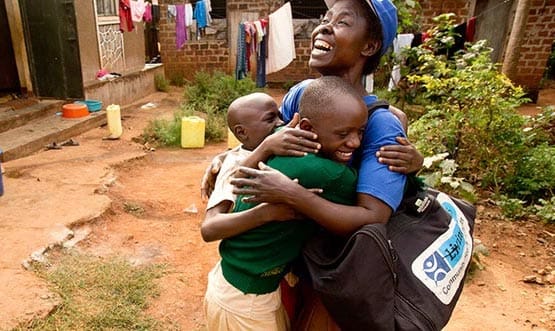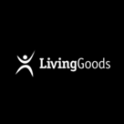The problem: a shortage of frontline health workers and inadequate distribution of health products and knowledge
Half of the world lacks access to essential health care. [1] Many health care systems — particularly in developing countries — are chronically under-funded, under-stocked, and understaffed. Let’s look at some of the numbers.
On average, there are 2.3 health workers per 1,000 people in Africa, compared to 24:1,000 in the United States. [2] Further, more than 24% of the global burden of disease falls on people living in African countries, where only 3% of the world’s health workers operate with less than 1% of the world’s financial resources. Sub-Saharan Africa in particular makes up only about 13% of the world’s population, yet suffers an estimated 66% of global maternal deaths, 41% of global stillbirths, and 40% of global newborn deaths. [3]

Stock-out rates (instances where an item or medicine is out of stock and unavailable) for critical medicines at public health facilities routinely exceed 50%, and poorly trained, poorly monitored health outlets are standard. [4] These issues increase in the hardest-to-reach rural communities where need is often greatest. In developing regions, more than 45 million women per year receive either inadequate antenatal care or none at all, and more than 30 million women deliver their babies outside of a healthcare facility.
The solution: community health workers
Empowering community health workers (CHW) to provide reliable and affordable care along with essential medicines and products to the doorsteps of millions saves and improves lives.
How Living Goods works
Living Goods aims to transform the way health care is delivered by addressing two fundamental barriers in the developing world: the significant shortage of frontline health workers and the inadequate distribution of health products and knowledge.
Living Goods helps governments strengthen and professionalize their community health systems. They recruit, train, equip, and manage government-recognized networks of local CHWs who go door to door within their neighborhoods, providing health education, diagnoses, medicines, and health products that save and improve lives. CHWs focus on high-impact areas where they make the biggest difference at a low cost, including pregnancy and newborn care, malaria, pneumonia, diarrhea, nutrition, immunization, and family planning.
— World Health Organization
Living Goods CHWs take clients through the diagnosis workflow free of charge. Clients pay for items they purchase (like sanitary napkins and powdered milk) as well as most medicines. Some medicines, like birth control pills, Sayana Press injectable contraceptive, and malaria medications are offered free of charge because they are provided by the governments of Kenya and Uganda and distributed by CHWs, though this varies by location.
Living Goods combines best practices from public health with business acumen and technology from the private sector to ensure effective operations. They believe in four essential components to strengthen community health programs:
- CHWs are compensated for their work
- Essential medicines and supplies are always in stock
- CHWs receive supervision and data-driven performance management
- CHWs are tech-enabled

CHWs are armed with a powerful, diagnostic mobile application — the SmartHealthTM app — that Living Goods co-developed with technology partner Medic Mobile. It allows CHWs to register, track, and follow up with patients, ensuring data-driven performance management, as well as real-time data collection. Clients can also receive messages on their mobile phones with care reminders.
Living Goods also advocates at the national level to strengthen primary health care (PHC) systems, striving to ensure all children and their families are able to access lifesaving care when and where they need it.

